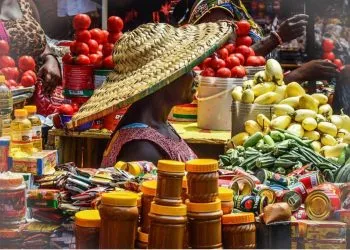
By Wisdom JONNY-NUEKPE
The Ministry of Food and Agriculture (MoFA) has announced measures under the Ghana Tree Crops Diversification Project (GTCDP) to tackle the widening gap between palm oil production and consumption in the country.
According to the ministry, annual domestic consumption of palm oil has reached approximately 250,000 metric tonnes, far outstripping domestic production levels. The ministry says the imbalance poses both economic and industrial challenges, necessitating targeted interventions to boost output.
MoFA stressed that the palm oil industry requires urgent attention, noting that increased investment, improved farming practices and support for smallholder farmers would be critical in bridging the supply gap. The GTCDP is expected to stimulate production by promoting better seedlings, expanding cultivation and creating stronger market linkages for producers.
According to MoFA, however, annual production of the crop is estimated at 50,000 metric tonnes, contributing to the country’s huge food import bill currently in excess of over US$3billion.
Under the Medium-Term Expenditure Framework (MTEF) 2025-2028 of MoFA, government has outlined immediate plans to address challenges in the palm oil production value chain.
According to the framework, government will develop the national palm oil industry policy to offer incentives for the growth of palm and develop the entire value chain of the palm oil industry.
Dubbed the ‘Red Gold’ initiative, government intends to provide 1.5 million oil palm seedlings to farmers and encourage them to actively participate in out-grower palm plantation schemes.
In July this year, the Tree Crops Development Authority introduced new regulations for palm oil imports.
The authority noted that the new regulation is partly to curb substandard imports, as lots of products coming into the country are without proper scrutiny, which affects local processors and consumer safety.
However, stakeholders have suggested that the regulations will also enable producers to augment local production while curbing imports.
Indeed, trade data obtained from the Oil Palm Development Association of Ghana (OPDAG) indicates that the country imported some US$1.17billion worth of oil palm between 2019 and 2021.
The OPDAG noted that domestic consumption would continue to outweigh production if artisanal oil palm millers incessantly deploy little or no technology.
The association maintains that these small-scale producers and artisanal millers are not only limited in capacity, but they also lack best practices.
For instance, a standard palm farm per hectare should give the farmer about 18-25 tonnes of fresh fruits per year but small-scale producers in the country, according to the OPDAG, get less than six tonnes per hectare.
Whereas the oil extracting rate should ideally be 20-25 percent per tonne, artisanal millers are doing 11-13 percent.
“Intensification must be done to double the current production to, at least, 50 percent. Adoption of best practices at the farm level and at mills should be prioritised,” he advocated.
In Africa, Nigeria used to be the leading palm oil producer, but abandoned it after it discovered oil. Currently, Ivory Coast is the only net exporter of palm oil on the continent.
The post MoFA targets closing palm oil production deficit appeared first on The Business & Financial Times.
Read Full Story





















Facebook
Twitter
Pinterest
Instagram
Google+
YouTube
LinkedIn
RSS